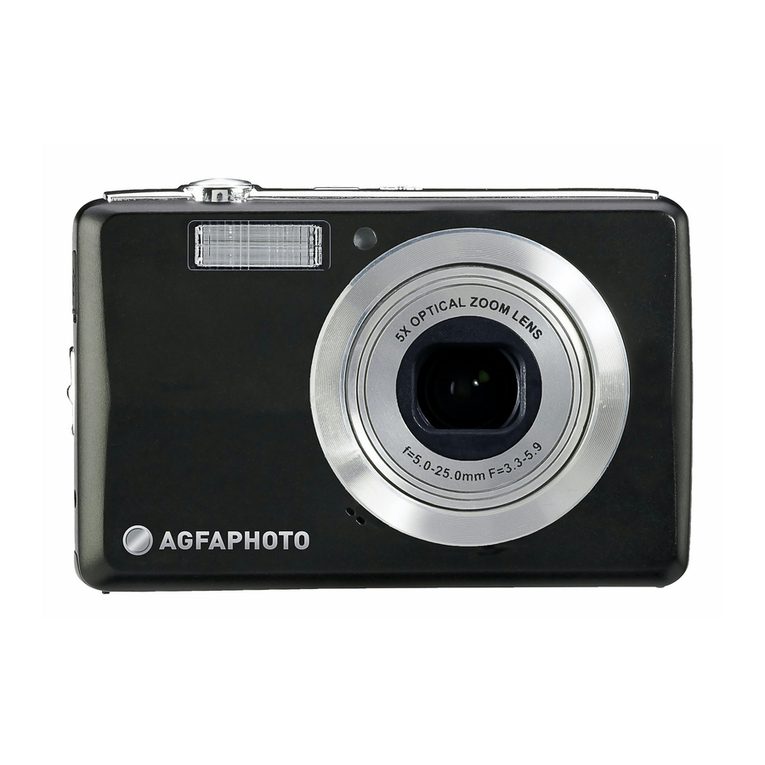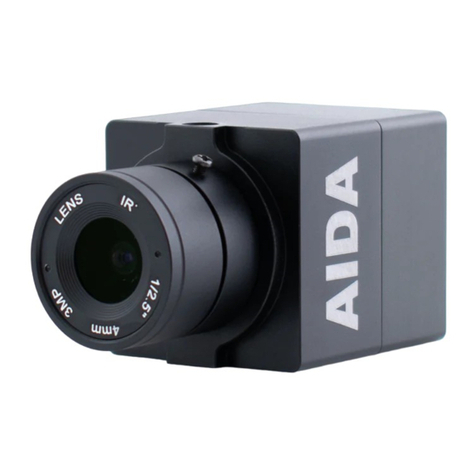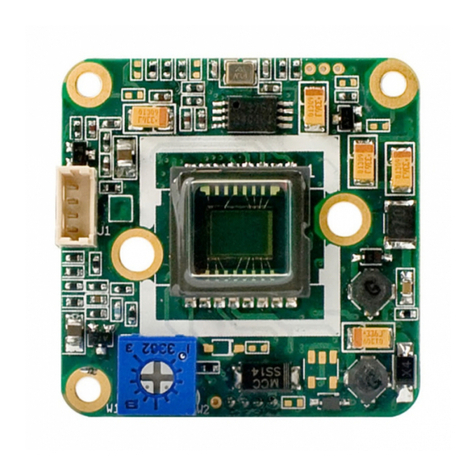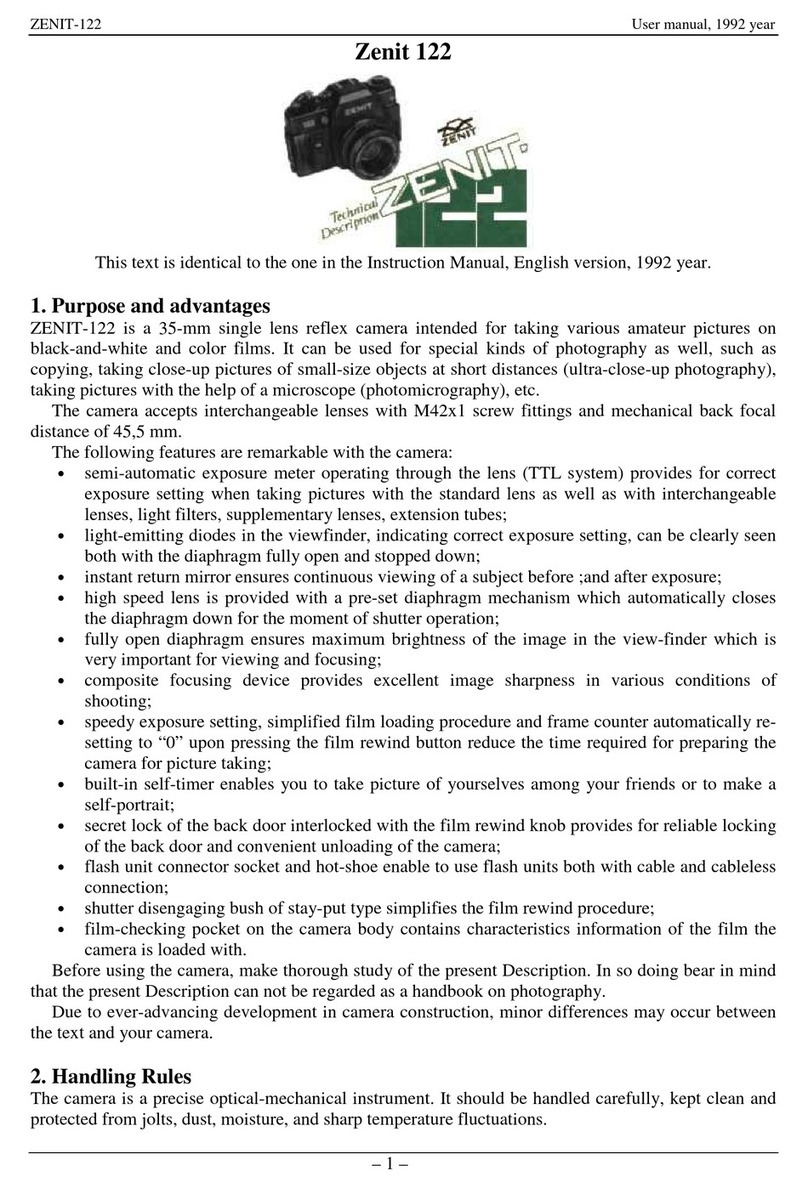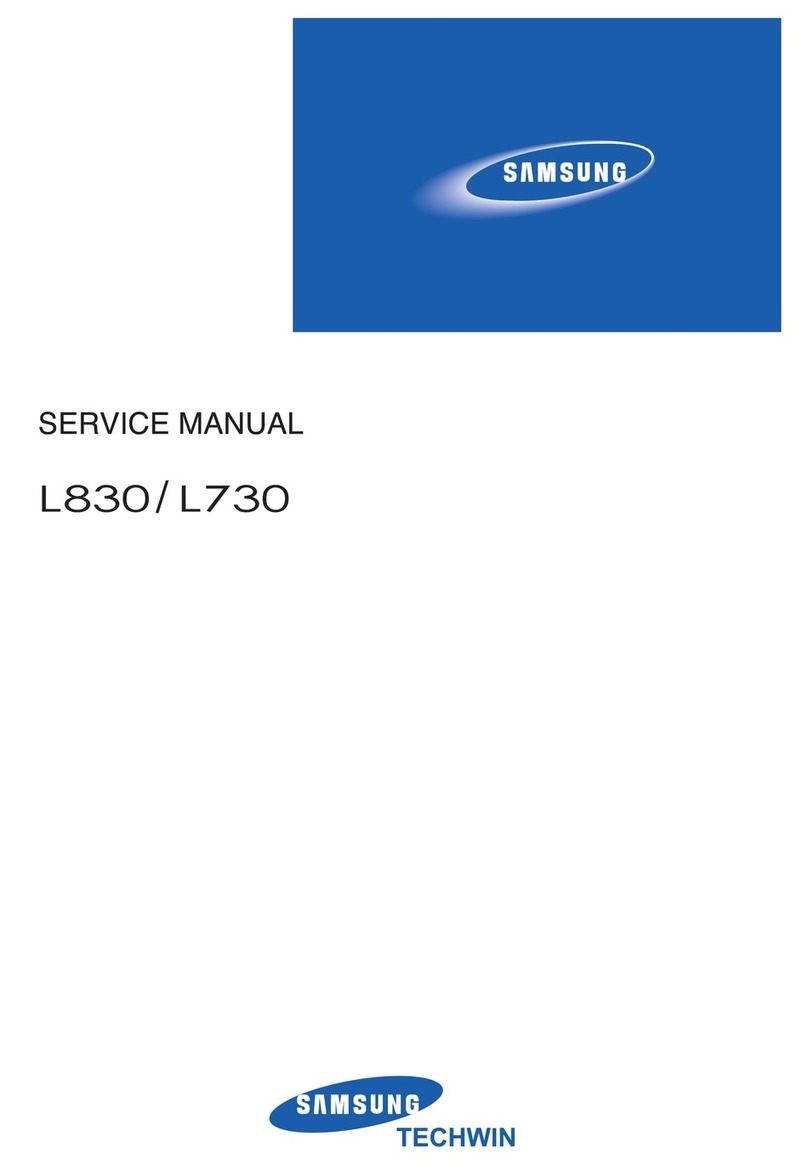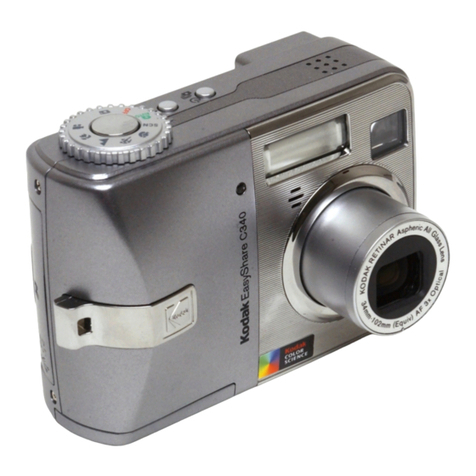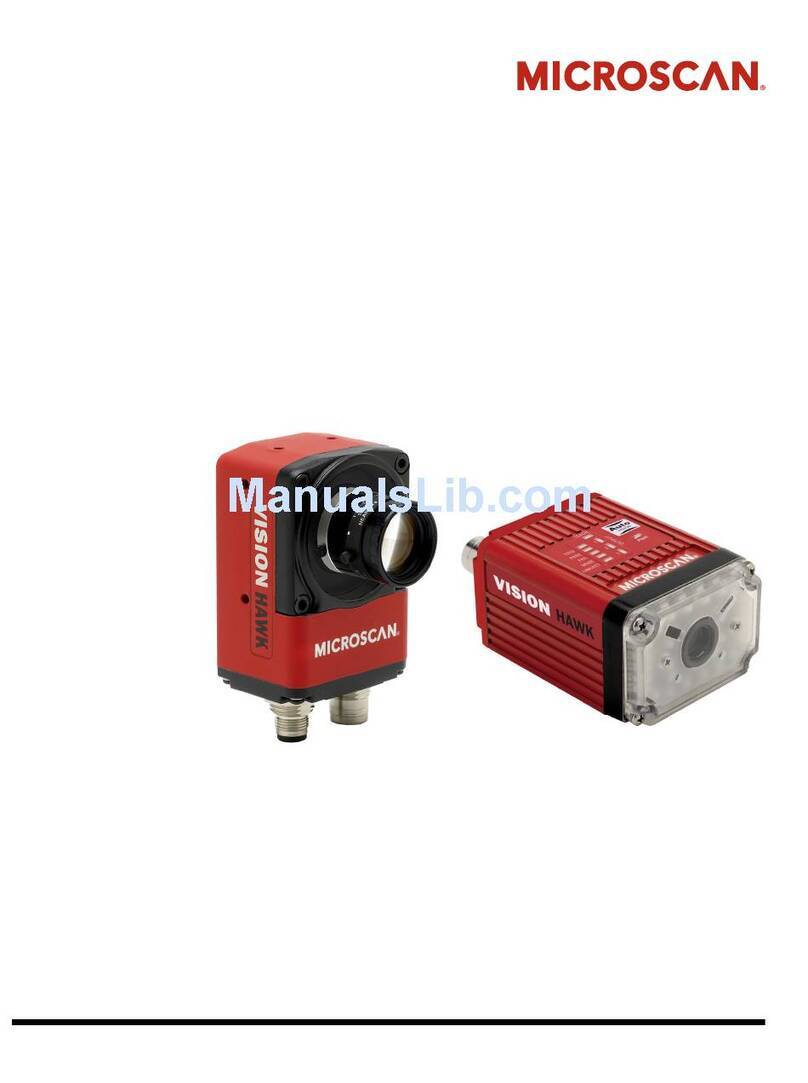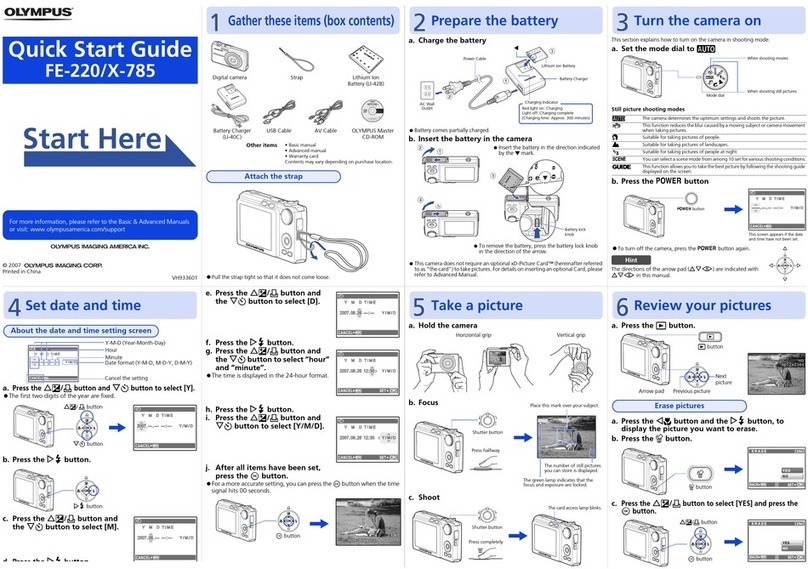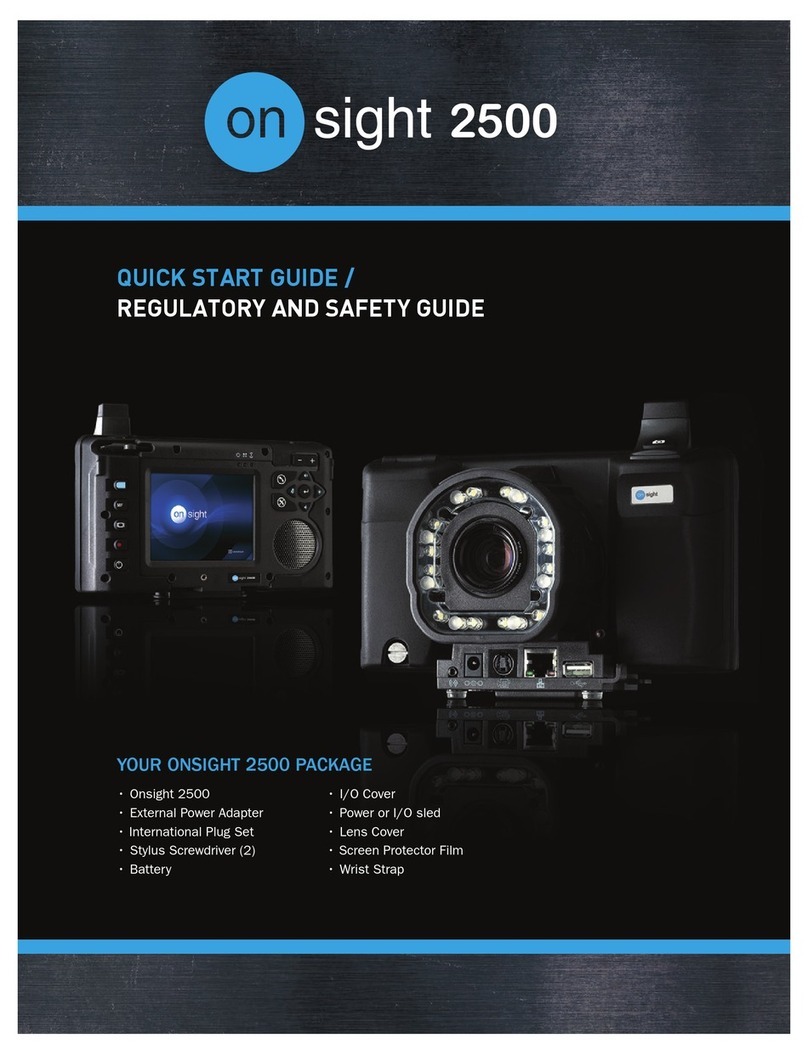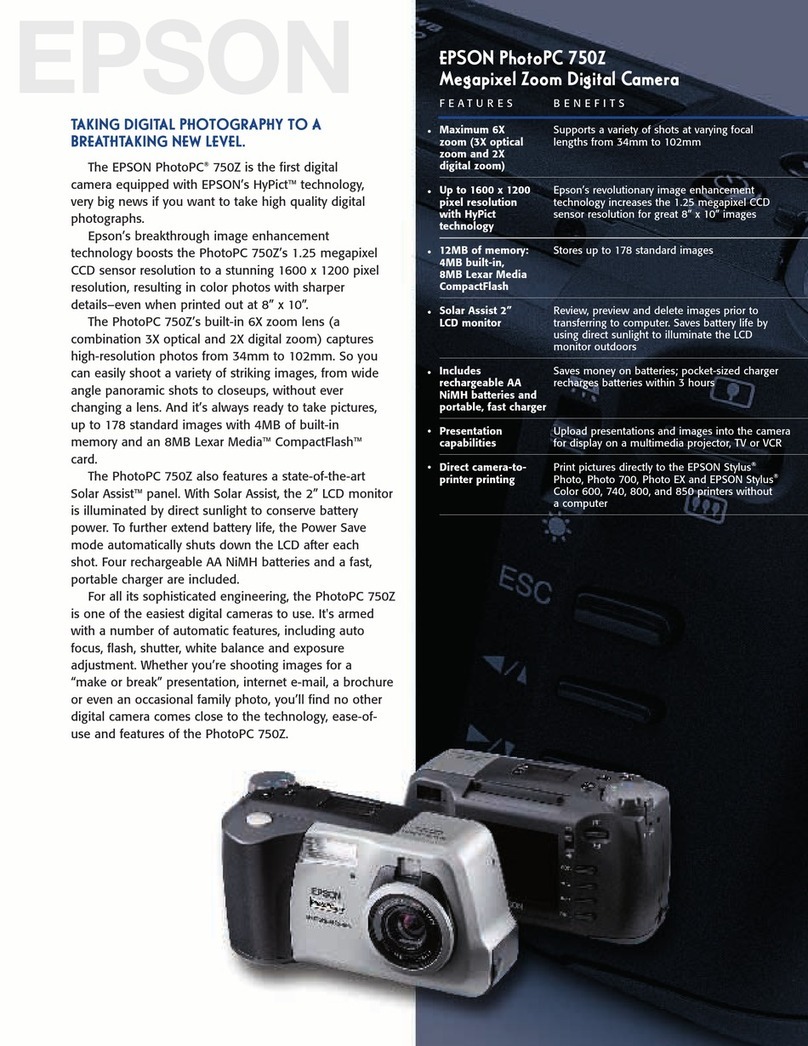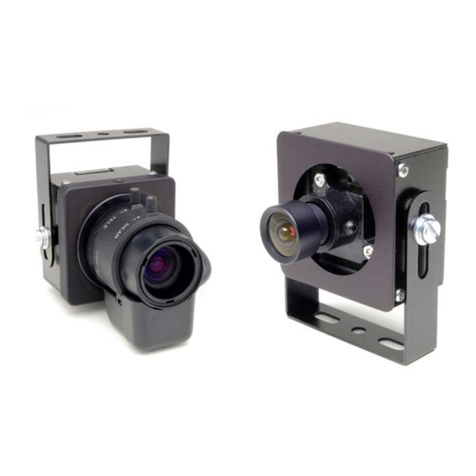BlokCam X2 User manual

X2 Installation and User Manual V1.0.3
EN
®

2
BlokCam ®X2 Installation and User Manual V1.0.3 Issue Date 01/06/2018
Contents
3 Introduction
3 The Process Explained
3 Remarks
4 What’s Included
4 Standard Configuration
4 Telescopic Pack
5 Technical Information
5 X2 - Transmitter
5 S4 - Sensor
6 B4 - Battery
6 R4 - Repeater
7 P2 - Processor
8 M2 - Monitor
8 CS1 - Charging Station
9 System Configuration
10 Installation
10 Mount & Secure the Transmitter
11 Mount, Connect & Secure the Sensor
11 Mount, Connect & Secure the Battery
12 Mount & Secure the Repeater/s
12 Connecting and Powering the Repeater/s
13 Position and Connect the Processor
13 Mount, Connect & Secure the Monitor
13 Connecting the Charging Station
14 Battery Charging Instructions
14 Operating Instruction
15 Accessing & Downloading Saved Data
15 Connecting to the Network
16 Set up the Video Management Software
19 Selecting the Storage Location
20 Viewing & Downloading the Recordings
21 Viewing & Downloading the Screenshots
22 Logging Out & Disconnecting the Laptop
22 Logging In
23 Accessories
23 Office Link
24 VC4 - V-Cam
24 VC4a - V-Cam (Audio)
25 FS1 - Footswitch
25 PB1 - Pendulum
26 BM1 - BlokMag

3
BlokCam ®X2 Installation and User Manual V1.0.3 Issue Date 01/06/2018
Introduction
BlokCam ® is a wireless system that can be quickly and easily
deployed to the hook block or boom tip of a crane. The sound
and view from below the camera is then transmitted and
received wirelessly via the antenna system to a screen in the
cab. This allows the operator to see and hear the load and
surroundings, giving an unobstructed, live, audio-visual feed of
the critical areas that working in the blind would never allow.
The Process Explained
1. The Battery provides power to the Transmitter and the
Sensor. The Sensor captures the audio-visual feed and
sends it to the transmitter. Each component is magnetically
attached and tethered to the desired surface. The signal is
transmitted through one or more repeaters depending on
the required configuration.
2. The Repeater is a modular transceiver which can be
powered over ethernet (POE), by the BlokCam ® Battery or
an alternative 12-24Vdc supply. The Repeater receives the
wireless signal from the transmitter and relays the data back
to a Processor and Monitor. The quantity and position of the
repeater/s vary depending on the required configuration.
3. The final Repeater will be connected to, and powered over
ethernet by the Processor. The Processor can be powered
by mains or a 9-36vdc supply. The processor decodes the
data and transfers the image and audio onto the Monitor.
The Processor also powers the Monitor.
Remarks
1. Always adhere to the crane manufacturer’s instructions.
2. BlokCam ® should be used to assist the operator’s
judgement, not replace it.
3. All aspects of installation, removal, charging, use and fault
finding should only be carried out by trained and competent
persons
4. Ensure BlokCam ® parts and components do not interfere
with crane manufacturers and/or third-party components,
parts and systems, moving or otherwise.
5. The hook block parts and components are magnetically
mounted; prior to adverse weather conditions or in any
situation where the hook block may come into contact with
the crane and/or third-party components, moving or
otherwise remove all components from the hook block.
6. Always ensure that lanyards are connected, and Quick
Links are tightened. Consider that the hook block may
change configuration, shape and size.
7. High powered magnets in use. Neodymium magnets are
permanent and strong, use correct protective equipment to
avoid trapping hazard.
8. Working at Height. If possible, installation work should be
completed at ground level, prior to the crane erection and
installation of the jib. For working at height, please refer to
regional and site-specific regulations and guidelines and
ensure installation team are competent and adequately
trained.
9. In Wi-Fi networking, a point-to-point wireless bridge lets
users wirelessly connect two or more locations together.
This bridge connects two or more locations to share data
across the network.
10. BlokCam ® transceivers operate within the 5GHz band. For
best results ensure a direct line of sight between all wireless
transceivers and antennas.
11. Frequency selection and transmit power may vary. Please
refer to regional regulations, guidelines and authorities to
ensure legal operation.
12. A competent person should carry out pre-use checks prior
to the commencement of work. Pre-use check sheets are
available online from www.blokcam.com
13. Parts and components may differ from renders.
14. Manual subject to change without notice
15. Subject to Copyright

4
BlokCam ®X2 Installation and User Manual V1.0.3 Issue Date 01/06/2018
What’s Included
Standard Configuration
•1 x Rugged Case
•1 x Transmitter
•1 x Sensor
•2 x Batteries
•1 x Charging Station
•1 x Repeater
•1 x Blanking Plug - Input Socket - 12-24Vdc
•1 x Processor
•1 x Monitor
•2 x Power Supply Unit (AC-DC)
•2 x PSU Mains Lead (Region Specific)
•1 x Power Lead - Monitor
•1 x 3m HDMI Lead - Monitor
•5 x Quick Links
•6 x 3mm x 600mm Lanyards
•1 x LAN Cable - 75m
•1 x Power Cable - Battery to Transmitter/Repeater
•3 x 90 Degree N-Type Connector
•4 x 7 dBi Duck Bill Antenna
•1 x Twin Suction Cup
•2 x Ram Mount Arm - Double Socket Arm
•1 x Ram Mount with U-Bolts
•1 x Ram Mount with Strap Base
•1 x Pre-use Check Sheet (Pad)
Telescopic Pack
•1 x Rugged Case
•2 x Batteries
•1 x Charging Station
•1 x Repeater
•1 x Blanking Plug - Input Socket - 12-24Vdc
•1 x Blanking Plug - Socket - PoE LAN Port
•1 x Power Supply Unit (AC-DC)
•1 x PSU Mains Lead (Region Specific)
•2 x Quick Links
•2 x 3mm x 600mm Lanyards
•1 x Power Cable - Battery to Transmitter/Repeater
•2 x 90 Degree N-Type Connector
•2 x 7 dBi Duck Bill Antenna
•1 x Magnetic Ram Mount with 1.5” Ball
•1 x Ram Mount Arm - Double Socket Arm
•1 x Ram Mount with U-Bolts
•1 x Ram Mount with Strap Base

5
BlokCam ®X2 Installation and User Manual V1.0.3 Issue Date 01/06/2018
Technical Information
X2 - Transmitter
1. LED - Power
2. LED - Data
3. LED’s – Signal Strength 25% - 100%
4. Sensor Socket –Audio
5. Sensor Socket - Video
6. Input Socket –12-24Vdc
7. Mounting Magnets
8. Quick Link Anchor Points
9. 7dBi Duck Bill Antenna
10. 90 Degree N-Type Connector
11. Antenna Ports
Technical Specifications
Video compression: H.264 (MPEG-4 Part 10/AVC) Baseline,
Main and High Profiles Motion JPEG
Resolution: 1920x1200/1080
Frame Rate: 25/30 fps (50/60 Hz)
Video streaming: Multiple, individually configurable streams in
H.264 and Motion JPEG
Image settings: Compression, colour, brightness, sharpness,
contrast, white balance, exposure value, exposure control,
exposure zones, local contrast, rotation, Corridor Format, text
and image overlay, privacy mask, mirroring of images
Audio streaming: One-way
Audio input: External microphone input
Transmission Frequency: 5 GHz
Transmit Power: 19-25dBm
Size and Weight:
Height: 128mm (5.04 inches)
Width: 170mm (6.69 inches)
Depth: 71mm (2.8 inches)
Weight: 2100g (4.63 pounds)
Casing: Aluminium.
Power: 12-24Vdc
Power Consumption: Max 13.3 W
Antenna Connector: N-Type
Storage: One internal SD/SDHC/SDXC slot supporting
memory card, 64Gb card included.
Operating Conditions: -20 °C to 60 °C (-4 °F to 140 °F)
Humidity 10-85% RH (non-condensing)
Storage Conditions: -40 °C to 65 °C (-40 °F to 149 °F)
IP Rating: IP 67 (with external ports connected)
S4 - Sensor
1. Video Sensor
2. Audio Sensor
3. Mounting Magnets
4. Quick Link Anchor Points
5. Notch - Orientation Indicator Plate
6. Cable Gland
7. Sprung Loaded Rotary Boss
8. Map - Orientation Guide
9. Plug - Video Sensor (not shown)
10. Plug - Audio Sensor (not shown)
Technical Specifications
Video Sensor: Fixed Iris, 1080p
Resolutions: Max1920x1200/1080
Minimum illumination: Colour: 0.3 lux
Frame Rate: Max 50/60 fps (50/60 Hz)
Audio streaming: One-way
Audio input: External microphone input
Transmission Frequency: 5 GHz
Transmit Power: 19-25dBm
Size and Weight:
Height: 100mm (3.94 inches)
Width: 75mm (2.95 inches)
Depth: 69mm (2.72 inches)
Weight: 1250g (2.76 pounds)
Casing: Aluminium.
Power: Provided by Transmitter
Operating Conditions: -20 °C to 55 °C (-4 °F to 131 °F)
Humidity up to 75% RH (non-condensing)
Storage Conditions: -20 °C to 60 °C (-4 °F to 140 °F)
IP Rating: IP 67 (with external ports connected, excludes IP65
Audio Sensor)
1
2
3
4
5
6
7
8
8
9
10
11
1
5
3
7
2
6
4
8

6
BlokCam ®X2 Installation and User Manual V1.0.3 Issue Date 01/06/2018
B4 - Battery
1. Output Socket (Pin 1 - Negative, Pin 2 - Positive)
2. On/Off Toggle Switch (optional extras)
3. Quick Link Anchor Points
4. Viewing Windows - Socket and Switch
5. Recharge Docking Contact - Pin 1 (-) Negative
6. Recharge Docking Contact - Pin 2 (+) Positive
7. Recharge Docking Contact - Pin 3 (+) Thermistor
8. Recharge Docking Contact - Pin 4 (+) Charge station loop
9. Recharge Docking Contact - Pin 5 (+) Charge station loop
10. Mounting Magnets (not shown)
Technical Specifications
Capacity: 19.2V 4.2Ah
Cell Manufacturer: Panasonic
Cell Type: Nickel-Metal Hydride Battery
Nominal Cell Voltage: 1.2V
Internal Fuse: 500mA
Size and Weight:
Height: 100mm (3.94 inches)
Width: 75mm (2.95 inches)
Depth: 69mm (2.72 inches)
Weight: 1250g (2.76 pounds)
MSDS: available from www.blokcam.com
IP Rating: IP 67 (with external ports connected)
R4 - Repeater
1. LED - Power
2. LED - Data
3. LED’s – Signal Strength 25% - 100%
4. Socket - Blank
5. Socket - PoE LAN Port
6. Input Socket –12-24Vdc
7. 1.5” Ball Joint (not shown)
8. Quick Link Anchor Points
9. 7dBi Duck Bill Antenna
10. 90 Degree N-Type Connector
11. Antenna Ports (not shown)
Technical Specifications
Transmission Frequency: 5 GHz
Transmit Power: 19 to 25dBm
Receiver Sensitivity: -90 to -75 dBm
Size and Weight:
Height: 128mm (5.04 inches)
Width: 170mm (6.69 inches)
Depth: 58mm (2.28 inches)
Weight: 1800g (3.97 pounds)
Casing: Aluminium.
Power: 12-24Vdc, Passive PoE 24V
Power Consumption: Max 5.5 W
Antenna Connector: N-Type
Operating Conditions: -20 °C to 70 °C (-4 °F to 158 °F)
Humidity up to 5 to 95% (non-condensing)
Storage Conditions: -40 °C to 90 °C (-40 °F to 194 °F)
Humidity Max 90% (non-condensing)
IP Rating: IP 67 (with external ports connected)
5
6
7
8
9
2
1
3
4
1
2
3
4
5
6
9
10
8

7
BlokCam ®X2 Installation and User Manual V1.0.3 Issue Date 01/06/2018
P2 - Processor
1. Input Socket - 9-36Vdc 5A
2. Input Socket - Colour Code - Red
3. Switch Socket - Multi Camera
4. Switch Socket - Colour Code –Blue
5. Output Socket - Monitor - 12Vdc 3.3A
6. Output Socket - Colour Code –Yellow
7. Output Socket - HDMI
8. POE Ports (Ports 1 –4)
9. LAN Port (Ports 5 & 6)
10. LED - Power
11. LED - Data
12. LED - 1 - 6 Port related
13. Cable release port
Technical Specifications
Video Compression: H.264
Latency: >150mS
Frame Rate: Max 60 fps
Resolution: 1920 x 1080
Video and Audio Output: HDMI
Monitor Output: 12Vdc 3.3A
Size and Weight:
Height: 121mm (4.76 inches)
Width: 190mm (7.48 inches)
Depth: 161mm (6.34 inches)
Weight: 3800g (8.38 pounds)
Casing: Aluminium.
Power: 9-36Vdc 5A
Operating Conditions: 0 °C to 40 °C (32 °F to 104 °F)
Humidity up to 10% to 90% (non-condensing)
Storage Conditions: -40 °C to 70 °C (-40 °F to 158 °F)
Humidity 5% to 90% (non-condensing)
9
8
5
7
6
3
4
1
2
10
11
12
13

8
BlokCam ®X2 Installation and User Manual V1.0.3 Issue Date 01/06/2018
M2 - Monitor
1. Button - Power
2. Button - Input
3. Button - FN (Function)
4. Button - MENU/EXIT
5. Navigation Wheel
6. Input Socket - 12Vdc
7. Input Socket –HDMI
8. 4 x Threaded Holes for Vesa Mount with 1.5” Ball Joint
9. Vesa Mount with 1.5” Ball Joint (Not Shown)
Technical Specifications
Screen Size: 10.1”
Aspect Ratio: 16:9
Resolution (pixels): 1920 x 1080
Scan Frequency (Hz): 60-72
Response time (ms): 20
Viewing Angle (degrees) 170 x, 170 y
Brightness (cd/m2): 350
Contrast Ratio: 800:1
LCD backlight: LED
Video and Audio Input: HDMI
Audio Output: <1.2W Speaker, 3.5mm Headphone Output
Size and Weight:
Height: 121mm (4.76 inches)
Width: 190mm (7.48 inches)
Depth: 161mm (6.34 inches)
Weight: 3800g (8.38 pounds)
Casing: Plastic
Power: 12Vdc 3.3A - Provided by Processor
Operating Conditions: -20 °C to 60 °C (-4 °F to 140 °F)
CS1 - Charging Station
1. Input Socket - 10-30Vdc 4A
2. Input Socket - Colour Code - Red
3. LED –Charge indicator
4. Recharge Spring Contact - Pin 1 (-) Negative
5. Recharge Spring Contact - Pin 2 (+) Positive
6. Recharge Spring Contact - Pin 3 (+) Thermistor
7. Recharge Spring Contact - Pin 4 (+) Charge station feed
8. Recharge Spring Contact - Pin 5 (+) Charge station return
9. Charge Indicator Plate (on rear, not shown)
Technical Specifications
Power: 10-30Vdc 4A
Size and Weight:
Height: 96mm (3.78 inches)
Width: 150mm (5.9 inches)
Depth: 100mm (3.94 inches)
Weight: 2500g (5.51 pounds)
Casing: Aluminium.
Internal Fuse: 5A
Charge Indicator Plate
Led
Mode
Output
Yellow
No battery
41v
Yellow
Initialization
50mA
Orange
Fast Charge
0.9A
Green/yellow
Top-off ch
130mA
Green
Trickle ch
50mA
Orange/Green
Error
50mA
1
2
3
4
5
6
7
8
1
3
4
6
8
5
7
2

9
BlokCam ®X2 Installation and User Manual V1.0.3 Issue Date 01/06/2018
System Configuration
Foreword
BlokCam ® X2 Crane Camera is a modular system. The
required set up and installation are dependent on the machine
and the environment.
The following characterise the most common crane installations
Luffing
Flat Top
Telescopic

10
BlokCam ®X2 Installation and User Manual V1.0.3 Issue Date 01/06/2018
Installation
Foreword
Duck Bill Antennas are omni directional. For best performance,
the orientation between the transmitting and receiving antennas
must remain parallel and in-line (not offset), consistent and with
a direct line of sight. Omni directional antennas do not emit a
signal out of the tip of the antenna.
Mount & Secure the Transmitter
Pre-empt the position of the Transmitter and consider:
a. lanyard length and distance to a secure point
receiving Repeater and, whilst ensuring a direct line of sight to
the anticipated Repeater position.
1. Magnetically mount the Transmitter to a clean and flat
surface.
2. Connect 2 x N-type right angle connector onto the antenna
ports.
3. Connect a 7dBi Antenna to each of the N-type right angle
connectors.
4. Both Antenna’s should be horizontally positioned and at a
right angle to each other.
5. Once the optimum position has been achieved, firmly
tighten the antenna’s and N-type connectors.
6. Fit Quick Link to Transmitter anchor point.
7. Choke and secure a lanyard to a fixed and secure point.
8. Attach the loose end of Lanyard to the Quick Link.
9. Firmly tighten the Quick Link.
When necessary reverse the above steps for removal.
×
×

11
BlokCam ®X2 Installation and User Manual V1.0.3 Issue Date 01/06/2018
Mount, Connect & Secure the Sensor
Foreword
The installation and orientation of the camera must correctly
correlate with the monitor and machinery movements. Following
installation, test to ensure the relationship between the camera,
monitor and machinery is accurate.
Pre-empt the position of the Sensor and consider:
a. the sensor cable length and route;
b. the distance to the Transmitter;
c. the view from the intended position;
d. the lanyard length and distance to a secure point;
e. the orientation of the camera;
f. if a pendulum will be required to compensate for the
dynamics of the machine.
1. Changing the orientation of the camera is a tool free
operation. The Camera and Rotary Boss are sprung loaded
into locator slots. To rotate the camera, lift, rotate and lower
the Sprung Loaded Rotary Boss. Use the engraved text,
map and notch as a guide to relocate correctly. As indicated
the Rotary Boss will not rotate past 315 degrees due to the
rotation stop.
2. Magnetically mount the Sensor to a clean and flat surface.
3. Connect Video Sensor Plug to the Video Sensor Socket on
the underside of the Transmitter.
4. Connect Audio Sensor Plug to the Audio Sensor Socket
on the underside of the Transmitter.
5. Secure the cable to a clean and flat surface using the pre-
installed cable magnets.
6. Fit Quick Link to Sensor anchor point.
7. Choke and secure a lanyard to a fixed and secure point.
8. Attach the loose end of lanyard to the Quick Link.
9. Firmly tighten the Quick Link.
When necessary reverse the above steps for removal.
Mount, Connect & Secure the Battery
Pre-empt the position of the Battery and consider:
a. the power cable length and route;
b. the distance between the Battery and Transmitter;
c. the lanyard length and distance to a secure point;
d. that the battery is changed on a regular basis.
1. Magnetically mount the Battery to a clean and flat surface.
2. Connect the Power Cable between the Output socket on the
Battery and the Input Socket on the Transmitter.
3. Secure the cable to a clean and flat surface using the pre-
installed cable magnets.
4. Fit Quick Link to Battery.
5. Choke and secure a lanyard to fixed and secure point.
6. Attach the loose end of lanyard to the Quick Link.
7. Firmly tighten the Quick Link.
When necessary reverse the above steps for removal.
Rotation Stop
Notch
Map

12
BlokCam ®X2 Installation and User Manual V1.0.3 Issue Date 01/06/2018
Mount & Secure the Repeater/s
Foreword
The Repeater is a modular transceiver that relays the wireless
signal. The Repeater can be powered over ethernet (POE), by
the BlokCam ® Battery or an alternative 12-24Vdc supply.
To protect against ingress, it is necessary to cap and seal all un-
used ports using the supplied blanking plug/s.
The installation, quantity, mounting, location, position and
orientation are dependent on the required configuration.
Systems with multiple Repeaters must be connected in the
correct series order.
The final Repeater in the series is connected to, and powered
over ethernet by the Processor’s POE Ports (Ports 1 – 4).
Always adhere to correct antenna alignment. Duck Bill
Antennas are omni directional. For best performance, the
orientation between the transmitting and receiving antennas
must remain parallel and in-line (not offset), consistent and with
a direct line of sight. Omni directional antennas do not emit a
signal out of the tip of the antenna.
Pre-empt the position of the Repeater and consider:
a. the data output method, wired or wireless;
b. the best suited power supply option;
c. the adjacent point to point relationship/s;
d. the antenna configuration;
e. mounting options;
f. the lanyard length and distance to a secure point;
g. which ports will need blanking;
h. the dynamics of machine.
1. Attach the best suited RAM Mount, Ball Joint Bracket to a
fixed and secure point. If the supplied brackets are not
suitable please seek advice from an authorised BlokCam ®
dealer.
2. Connect the Double Socket Ram Mount Arm complete with
lanyard to the RAM Mount Ball Joint Bracket.
3. Connect the Ball Joint attached to the rear of the Repeater
to the Double Socket Ram Mount Arm.
4. Fit Quick Link to Repeater.
5. Connect Double Socket Arm lanyard to Quick Link.
6. Choke and secure a second lanyard to fixed and secure
point.
7. Attach the loose end of lanyard to the Quick Link.
8. Firmly tighten the Quick Link.
9. Connect 1 x N-type right angle connector onto an antenna
port.
10. Connect a 7dBi Antenna to each of the ports.
11. Once the optimum point to point position has been
achieved, firmly tighten the Ram Mount Brackets, Antenna’s
and N-type connector.
When necessary reverse the above steps for removal.
Connecting & Powering the Repeater/s
Wireless (battery powered)
1. Fit 1 x Lan Port Blanking Plug to the LAN Port Socket.
2. Mount, connect and secure the BlokCam ® Battery as
instructed on page 11.
Wireless (alternative 12-24Vdc supply)
1. Fit 1 x Lan Port Blanking Plug to the LAN Port Socket.
2. Obtain any required permissions to tap into a suitable
supply.
3. Connect the supply to the 12-24Vdc Input Socket.
Wired (powered over ethernet)
1. Fit 1 x Input Socket Blanking Plug to the 12-24v Input
Socket.
2. Connect the Bayonet fitting from the ‘75m LAN Cable’to the
LAN Port Socket on the Repeater.
3. Install and secure the cable from the Repeater to the
anticipated Processor location using zip ties.

13
BlokCam ®X2 Installation and User Manual V1.0.3 Issue Date 01/06/2018
Position & Connect the Processor
Pre-empt the position of the Processor and consider:
a. the IP Rating, the Processor must be kept indoors;
b. the type of power supply, AC or DC;
c. the PSU/Power Cable, length and route;
d. the 75m LAN Cable length and route;
e. the monitor position;
f. the distance to the Monitor.
Systems with additional accessories may require
considerations for:
a. connecting and positioning additional cameras;
b. connecting and positioning a footswitch;
c. connecting and positioning a joystick;
d. connecting and positioning additional Repeaters;
e. connecting a laptop.
1. Connect the 75m LAN Cable from the Repeater to one of
the Processor’s POE Ports (Ports 1 – 4).
2. Connect the 3m HDMI Lead to the HDMI Socket
3. Connect the Monitor’s Power Lead to the Yellow Output
Socket (12Vdc 3.3A).
4. a. Connect the AC-DC Power Supply Unit and
associated PSU Mains Lead between the Red Input
Socket and a mains supply socket.
or
b. Connect the DC-DC Power Supply Cable between
the Red Input Socket and a suitable DC supply
socket.
6. Route and secure the Monitor’s HDMI and Power Lead from
the Processor to the anticipated Monitor location using zip
ties.
When necessary reverse the above steps for removal.
Mount, Connect & Secure the Monitor
Pre-empt the position of the monitor and consider:
a. the mounting options;
b. the lanyard length and distance to a secure point;
c. the HDMI and power cable length and route.
1. Attach the best suited RAM Mount, Ball Joint Bracket to a
fixed and secure point. If the supplied brackets are not
suitable please seek advice from an authorised BlokCam ®
dealer.
2. Connect the Double Socket Ram Mount Arm complete with
lanyard to the RAM Mount Ball Joint Bracket.
3. Route the Double Socket Arm Lanyard to afixed and secure
point. If necessary, fit and firmly tighten a Quick Link to
secure.
4. Connect the Ball Joint attached to the rear of the Monitor to
the Double Socket Ram Mount Arm.
5. Connect the HDMI Cable to the HDMI Port.
6. Connect the Power Cable to the 12Vdc Input Socket.
7. Adjust the mounting system to achieve the desired position
and firmly tighten the Ram Mount Brackets.
When necessary reverse the above steps for removal.
Connecting the Charging Station
Foreword
The charging station should be kept in a clean and dry
environment.
1. Place the Charging Station on a clean, dry, flat and level
surface. Ensure ease of access and egress and that the
chosen position is within reach of a suitable power source.
2. a. Connect the AC-DC Power Supply Unit and
associated PSU Mains Lead between the Red Input
Socket and a mains supply socket.
or
b. Connect the DC-DC Power Supply Cable between
the Red Input Socket and a suitable DC supply
socket.
When necessary reverse the above steps for removal.

14
BlokCam ®X2 Installation and User Manual V1.0.3 Issue Date 01/06/2018
Battery Charging Instructions
Foreword
The BlokCam ® X2 camera system runs on a non-hazardous
battery. Under normal operating conditions each battery should
provide approximately 12 hours of use. Certain operating
conditions will decrease the standard runtime of the battery,
including extreme hot or cold temperatures. The battery takes
approximately 5 hours to fully charge.
Spare batteries should be kept in a clean and dry environment.
BlokCam ® recommend swapping and charging the battery at
the beginning of every shift.
1. Ensure charging contacts on the Battery and Charging
Station are clean, dry and in good condition.
2. Ensure that the Charging Station is powered up.
3. Place the discharged battery into the Charging Station.
4. Use the Charge Indicator LED andIndicator Plate to monitor
the charge condition.
5. When charged and/or required, lift the battery from the
Charging Station.
Operating Instructions
Foreword
Operation is reliant on correct installation, charged batteries
and/or reliable power source.
1. Power up the Processor.
2. The Monitor should power up automatically. If the Monitor
does not power up automatically, press the power button on
the right-hand side of the Monitor.
3. Wired Repeaters will power up automatically.
4. If applicable, power up any Wireless Repeater/s as
instructed on page 12.
5. Power up the Transmitter. Mount, connect andsecure a fully
charged battery tothe Transmitter as instructed on page 11.
6. Following completion of the start-up procedure the camera
system should be fully functional and ready to use.
7. If required, re-position the sensor to achieve the desired
view.
If you are experiencing difficulties, please refer to the fault
finding guide.

15
BlokCam ®X2 Installation and User Manual V1.0.3 Issue Date 01/06/2018
Accessing & Downloading Saved Data
Foreword
To access and download saved data, ensure the BlokCam ®
system and components are installed correctly and fully
operational.
You will need a Laptop with VMS installed (Video Management
Software), a Cat5e RJ45 Patch Cable of suitable length, basic
networking and IT skills and access to the Processor.
Laptop/System recommendations and VMS are available from
www.blokcam.com
Connecting to the Network
1. Connect the Cat5e RJ45 Patch Cable between the laptop
and LAN Port 5 or 6 on the processor.
2. To avoid conflict, ensure all other networks, wired or
otherwise are disconnected and/or disabled.
3. Ensure the Laptop Internet Protocol Version 4 Properties
are configured to ‘Obtain an IP address automatically’.
4. Ensure the Laptop Internet Protocol Version 4 Properties
are configured to ‘Obtain DNS server address
automatically’.
In some scenarios it may be necessary to manually configure
the Laptops IP Address.
An IPv4 IP Address is made up of 4 Octets. The first, second
and third Octet must be identical for connectivity across all
paired units. The forth Octet must be unique to avoid conflicting
IP Addresses.
IPv4
1st
Octet
2nd
Octet
3rd
Octet
4th
Octet
Laptop
192
168
0
189
Camera
192
168
0
191
Transmitter
192
168
0
192
1st Repeater
192
168
0
193
2nd Repeater
192
168
0
194
Office Link
192
168
0
195

16
BlokCam ®X2 Installation and User Manual V1.0.3 Issue Date 01/06/2018
Set up the Video Management Software
1. Open the VMS application.
2. Select ‘Create new site’or ‘GET STARTED’.
or
3. Choose and type your preferred site name into the ‘Site
name’box.
4. Obtain the Site password from an authorised BlokCam ®
dealer. Do not create a password. Creating a password will
lead to system failure.
5. Type the procured password into the ‘Site password’box.
6. Re-type the procured password into the ‘Confirm password’
box.
7. Select ‘Next’.

17
BlokCam ®X2 Installation and User Manual V1.0.3 Issue Date 01/06/2018
8. The VMS will attempt to automatically search and discover
all available network cameras. If the desired camera is
discovered, skip to step 12.
9. If the desired camera is not automatically discovered, obtain
the cameras IP Address from an authorised BlokCam ®
dealer and add the camera manually.
10. Type the procured IP Address into the ‘Enter camera
address’box.
11. Select the ‘ADD’arrow to the right of the IP Address
12. Ensure the desired camera/s is/are selected.
13. Select ‘Next’.
14. Wait until the VMS contacts the selected camera/s.

18
BlokCam ®X2 Installation and User Manual V1.0.3 Issue Date 01/06/2018
15. Select ‘Finish’on the ‘Ready to install’page.
16. Wait until the VMS installs the selected camera/s.

19
BlokCam ®X2 Installation and User Manual V1.0.3 Issue Date 01/06/2018
Selecting the Storage Location
1. Locate 3 icons on the top left of the VMS software screen.
Select ‘Go to Configuration’.
2. Select ‘Customize’ on the ‘Go to Configuration’ Screen.
3. Under the heading ‘Snapshot folder’locate and select
‘Browse…’.
4. Select the desired storage location.
5. Select ‘OK’.
6. Check the storage location has changed and select ‘Open
folder when snapshot is taken’box.
7. Repeat steps 3 –6 for the ‘Recordings’section.

20
BlokCam ®X2 Installation and User Manual V1.0.3 Issue Date 01/06/2018
Viewing & Downloading the Recordings
1. Locate the 3 icons on the top left of the VMS software
screen. Select ‘Go to Recordings’.
2. Select the footage from the date required by scrolling
through the dates using the arrows left and/or right of the
date displayed.
3. Locate and select the ‘Save Recordings’ icon on the bottom
right of the VMS screen.
4. The blue time line indicates the duration of recording on the
selected date. Use the grey trimming arrows to reduce or
increase the duration of the required interval. For speed and
storage reasons, please keep the download duration to a
minimum.
5. If required, select the yellow arrow. Then magnify the
timeline using the + and/or –option/s.
6. If necessary, repeat and refine step 4.
7. When the required interval has been found, select ‘Save’.
8. Wait whilst the selected recoding interval is saved to the
desired location.
9. When the recording interval is saved, the folder containing
the file will open. Check the file is stored in the required
location and close the folder using the ‘X’ at the top right of
the ‘Folder’ page.
10. Repeat Steps 1 –9 to extract more recording intervals if
required.
Table of contents
